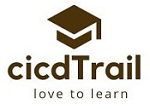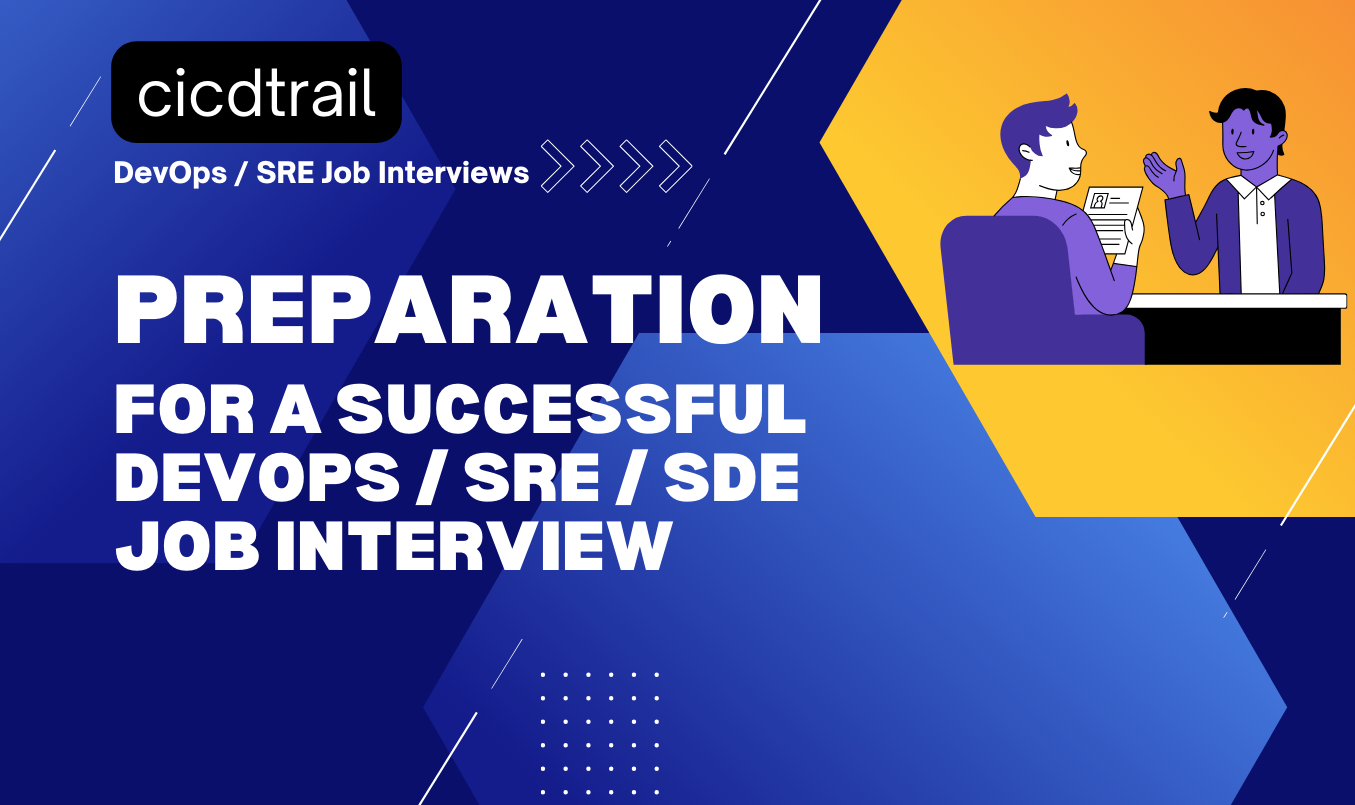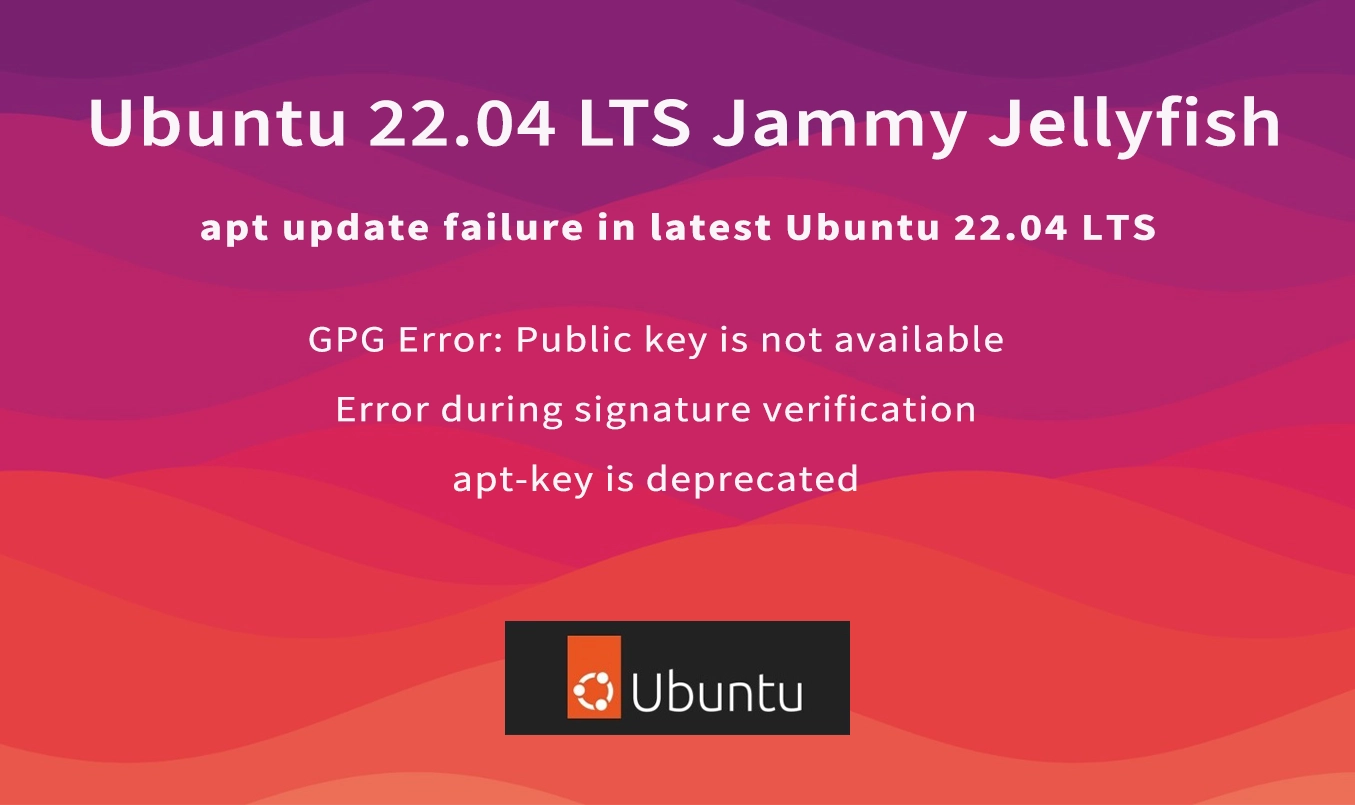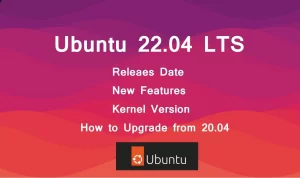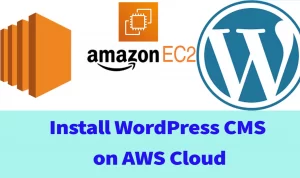It is becoming increasingly challenging for Software Engineers to learn wide range of different tools, tech Stack in rapidly changing Cloud and DevOps landscape. Today I am going to share important Cloud/DevOps questions and tips on how to prepare for DevOps interviews in 2023? This may not be a complete list but it does provide quick insight into basics and fundamentals for better preparations. Cloud/DevOps Interview questions are generally mixed and based on different technical skills to assess end-to-end understanding of Software Engineering. Other then technical skills, companies/recruiters also pay attentions to soft skills, Communication, competency, collaboration skills, Incident Management, Change Management. Few “actual” DevOps Questions:
- What is inheritance?
- What’s the different between class variable and instance variable?
- How packet travels from one one computer to another?
- What is DNS and how does it work?
- Can you use CI/CD pipeline to provision infrastructure?
- Using Zoom whiteboard, I was asked to draw VPC diagram with all required components. So a user on internet can send requests to web server in public subnet and triggering a Database update (INSERT or UPDATE) in private subnet.
Let’s take quick look at Top DevOps Interview Questions and How to prepare for DevOps Interviews in 2023?
- What is DevOps?
- What are the monitoring tools that you know?
- How will you troubleshoot if Application running slow?
- Explain Blue Green Deployment?
- What are the Patching methods followed in Production instances?
- What questions do you ask the Developer team when you are on boarding a new application?
- What is your approach if someone complains that application was working before and not working now?
- Explain major activities that you have performed?
- Explain major production outage that you have involved and how did you fix it?
Networking – How to prepare for DevOps Interviews in 2023?
Understanding of Computer Networking concept is vital for Cloud/DevOps or any Software Engineering job interview. Here are few important questions and having understanding of these will greatly help:
- Difference between TCP and UDP?
- What is a router, and how does it differ from a switch?
- Purpose of DNS, and how does it work?
- What is NAT, and how is it used in networking?
- Understanding of OSI model, and what are its layers?
- Purpose of ARP, and how does it work?
- What is a firewall, and how does it protect networks?
- Difference between a hub and a switch?
- What is VPN, and how does it work?
- What is DHCP, and how is it used in networking?
- What is a MAC address, and how does it differ from an IP address?
- What is VLAN, and how is it used in networking?
- Purpose of ICMP, and how does it work?
- Difference between a LAN and a WAN?
- Understanding of Port mapping, Port Forwarding,
- Awareness of important ports, FTP, SSH, Telnet, SMTP, DNS, HTTP, HTTPS, MySQL, RDP, NTP, POP3
- Understanding of OSI Models and important protocols.
- Understanding of CIDR, subnet mask, and how does it work?
- How you will test/troubleshoot connectivity? PING, Telnet?
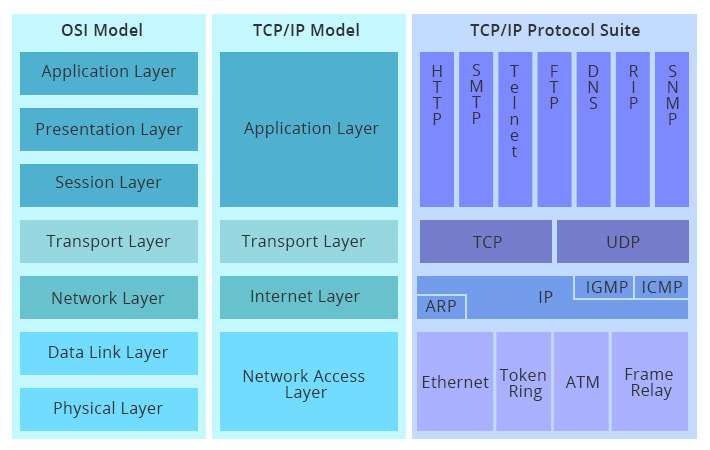
Cloud Basics – How to prepare for DevOps Interviews in 2023?
- What is Infrastructure?
- What is Operating System?
- What is Application?
- What is Cloud Computing?
- What is Datacentre?
- What is On-Premises datacentre?
- What are Cloud Services?
- What is Shared Responsibility Model in Cloud Infrastructure?
- What are Cloud Service Models?
- What is IaaS?
- What is PaaS?
- What is SaaS?
- What are Cloud Deployment Models?
- What is Private Cloud?
- What is Public Cloud?
- What is Hybrid Cloud?
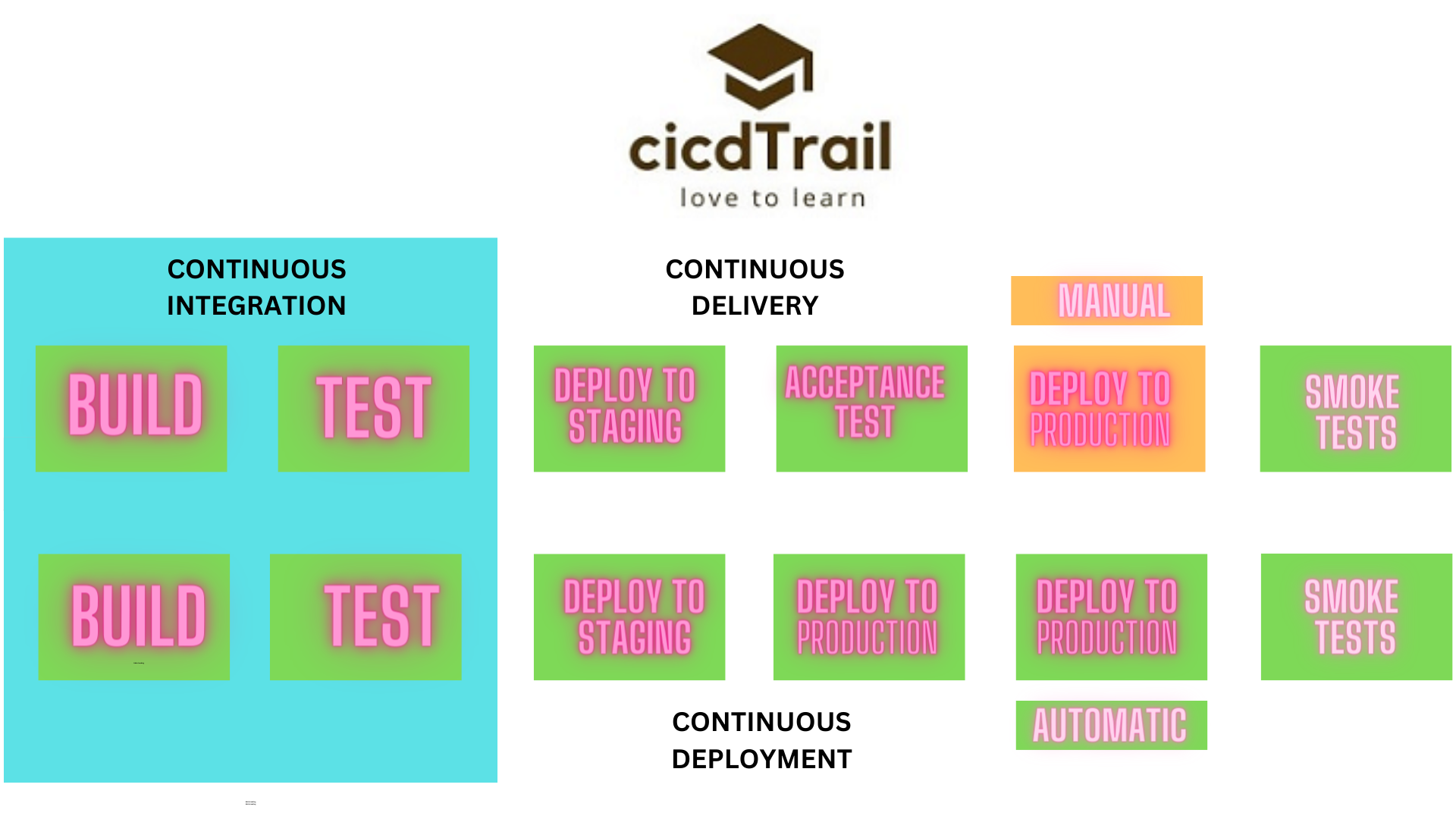
Amazon Web Services (AWS) – How to prepare for DevOps Interviews in 2023?
- What is AWS Global Infrastructure?
- What is AWS Region?
- What is AWS Availability Zone?
- Explain what is AWS EC2?
- What is AWS Free Tier?
- What is AWS Pricing Calculator?
- How to create AWS EC2 instance?
- What is AMI – Amazon Machine Image?
- What are the AWS Instance Types available and how to choose Instance Type?
- What is AWS EBS Volume?
- What is AWS Key Pair?
- How to change EC2 Instance Type?
- How to explore AWS Billing Dashboard?
- What is Security Group in AWS?
- Why Security Groups are Stateful?
- What is AWS Lambda?
- How to Configure CloudWatch Events?
- What is CloudWatch Logs Group?
- How to setup S3 LifeCycle Rules?
- How to enable S3 Versioning?
- What is SNS?
- How to setup CloudWatch Alarms?
- How to monitor AWS resources using Cloud Watch Metrics?
- How to create IAM user?
- How to see list of S3 Object versions?
- How to revert the changes in S3?
- What are the S3 Versioning disadvantages?
- Is it possible to enable versioning only for some objects in S3 bucket?
- How to setup LifeCycle rules only for some objects in S3 Bucket?
- What are the Cloud Watch Alarm states?
- What is S3?
- What is S3 Object URL?
- S3 Storage Classes?
- Explain S3 Advantages?
- How to setup S3 LifeCycle Rules?
- How to enable S3 Versioning?
- What is CloudHealth?
- What is SNS?
- How to setup CloudWatch Alarms?
- How to monitor AWS resources using Cloud Watch Metrics?
- How to create IAM user?
- How to see list of S3 Object versions?
- How to revert the changes in S3?
- What are the S3 Versioning disadvantages?
- Is it possible to enable versioning only for some objects in S3 bucket?
- How to setup LifeCycle rules only for some objects in S3 Bucket?
- What are the Cloud Watch Alarm states?
- What is IAM Role?
- What is IAM policy?
- What is IAM user?
- What is IAM group?
- Difference between IAM role and IAM user?
- How to create custom IAM policy?
- What is Bucket Policy and how to write custom Bucket Policy?
- What is AWS CLI?
- How to install AWS CLI?
- How to write IAM custom policy?
- What are different IP Classes?
- What is CIDR Notation?
- What is Internet Gateway?
- What is Local Gateway?
- What is Default Gateway?
- What is Network id?
- What is Public Subnet?
- What is Private Subnet?
- What is Public IP?
- What is Private IP?
- How to create VPC?
- What is Route Table? How to create Route Table?
- What is Local and Internet Gateway?
- What is subnet?
- Difference between VPC CIDR and Subnet CIDR?
- Difference between default VPC vs. Custom VPC?
- What is NAT Gateway?
- What is Bastion Host?
- What is Load Balancer?
- What is Auto Scaling?
- How to integrate Auto Scaling and Load Balancer?
- What is Launch Configuration?
- How to setup ASG?
- How to integrate ASG with ELB?
- How to setup ELB health check settings?
- What are Min, Max and Des values in ASG?
- How to add ASG scaling policies?
- What is Load balancer Endpoint?
- How to configure user data and what are the advantages of user data?
- How to troubleshoot cloud-init issues?
- Discuss on ASG, ELB advantages?
- What is Multi AZ RDS deployment?
- What are the 3-tier Architecture best practices?
- Difference between Compute auto scaling vs. storage auto scaling?
- How to setup CDN using Cloud Front?
- Difference between Internal Vs. Public Load Balancer?
- What is 3-Tier Architecture?
- What is RDS?
- How to create RDS instance?
- How to connect to the RDS instance?
- How to add JDBC connection string in application?
- Can you tell me a few major tasks/activities done in AWS?
- How will you login to the private subnet instances?
- Differences between network ACL & Security groups?
- How will you monitor the ec2 instances?
- Can you explain IAM Role based access & Assume Role based access?
- Can you modify the policies of the role attached to the EC2?
- How will you encrypt the root EBS volume?
- Can I delete the custom AMI once the Instance Launched using that AMI?
- What is Latency Based routing in route53?
- What troubleshooting activities have been done in AWS so far?
- User is unable to upload 10GB file to an instance? What could be the issue?
- What is your job role in AWS?
- Can you stop the EC2 instance which is in the Auto Scaling group?
- Can you explain the difference between Application LB & Classic LB?
- Can we create A record for the ELB?
- Difference between CNAME vs. Alias Record?
- How many Security Groups can create to a single EC2 instance?
- EC2 server experiencing slow internet connection how to fix?
- How to add multiple ‘Internet Gateway’ to the VPC to increase the network speed?
- Can we create multiple subnets in VPC?
- How will you login to the Windows host hosted on a private subnet?
- Can I have Private subnet instances accessing the internet through Internet gateway?
- What are the EC2 provisioning tools used to launch the instances?
- How will you monitor Memory utilization from Cloud watch?
- How will you modify Launch Configuration when the Instances are already running in Auto Scaling?
- Have you ever done database backup & restore?
- How will you automate the EC2 snapshots?
- What are the disadvantages of NAT Gateway?
- How will you identify if the subnet is public or private?
- How will you resize the EC2 root EBS root volume?
- Clients receiving HTTP: 503 service unavailable or HTTP: 504 gateway timeout error message, How to fix?
- EC2 instance is no longer responding, how will you fix it?
- EC2 server throwing out of memory errors, how will you fix these issues?
- Do you know what a system manager in AWS?
- What are Cloud watch Events?
- How will you monitor disk and file system usage using Cloud Watch?
- Can I authenticate the EC2 without using Keypair?
- Can you explain the 3-tier architecture with high availability in each layer?
- Can I create ELB for the bastion hosts?
- What is VPN in AWS?
- Have you ever logged a case with Amazon?
- Where will you store ec2 snapshots?
- Have you ever configured the cloud watch metric?
- What is Life Cycle Hook in Auto Scaling?
- Instance is showing 1/2 state, how will you troubleshoot the issues.
- Have you ever worked on Capacity Planning?
- Explain to me Disaster Recovery Planning for Region Failures in AWS?
- Difference between ELB and EFS
- What is VPC peering?
- How to restrict particular source IP in AWS?
- How to create Cross IAM Role in AWS?
- What is Transit Gateway?
- What is AWS Lambda?
- What is Amazon AMI?
- Difference between EBS vs. EFS vs. S3?
- Difference between Security Group vs. Network ACL?
- How will you monitor VPC network flow?
- How to write AWS custom IAM policy?
- Explain VPN in AWS?
- Difference between Cloud Trail Vs. Cloud Watch?
- Explain AWS Auto Scaling Policies?
- What is CloudFront? Explain different Origins in CloudFront?
- Difference between Horizontal Scaling vs. Vertical Scaling?
- How to recovery AWS keypair to connect to the EC2 instance?
- What is Connection Draining?
- What is S3 Glacier storage class?
- What is DynamoDB?
- Explain steps in migrating on-premises servers to AWS cloud?
- How to add additional Private IP for EC2 instance?
- Explain what is 3-tier Architecture?
- What is Placement Group in AWS?
- What is the difference between Internet Gateway Vs. NAT Gateway?
- What are 2/2 checks in AWS EC2?
- Explain Route53 policies?
- What is Cross-Zone Load Balancing in AWS?
- What is the difference between Multi-AZ deployment and Read Replicas in RDS?
- How to enable Life Cycle rules to S3 Bucket folders?
GIT
- What is Source Code Management (SCM)
- What is versioning?
- Explain GIT Architecture?
- Explain GIT commands?

git init | git add | git status | git commit | git reset | git revert |
git log | git config | git remote | git pull | git push | git clone |
git branch | git diff | git restore | git rm | git checkout | git merge |
- How to install GitBash?
- What is Git local repository?
- What is Git remote repository?
- What is the difference between Git PULL, Git Clone, Git Fetch?
- How to add collaborators to the BitBucket Repo?
- How to add SSH keys to BitBucket?
- How to clone remote repository using SSH & HTTPS protocol?
- Explain Git Branching Strategy?
- What is the difference between git reset and git revert?
- what is the difference between soft reset and hard reset?
- Explain what is Pull Request?
- What is the branching strategy are you using in your environment?
- What is the difference Git Clone vs. Git fork?
- Explain Git repository life cycle?
- What are the different Git Merge types?
- What is Git rebase?
- Difference between Git rebase vs. Git Merge?
- What is Git Cherry-Pic?
- What is the branching strategy are you using in your environment?
Apache Maven
- What is Apache maven?
- How to install Apache Maven?
- How to create Maven folder structure?
- What are the pre-requisites for Apache Maven installation?
- How to check maven version?
- What is Artifact?
- What is Maven Build?
- What are Maven Goals?
- What is Maven local repository?
- What is pom.xml file significance?
Apache Tomcat – How to prepare for DevOps Interviews in 2023?
- What is Application Server?
- What is Apache Tomcat?
- How to install Apache Tomcat?
- How to deploy artifacts to Tomcat server?
- What is CATALINA HOME?
- How to add users in Apache Tomcat?
- How to start/stop Tomcat servers?
- What is the default port for Apache Tomcat?
- How to configure JAVA HEAP for applications?
NGINX
- What is reverse proxy?
- Difference between Forward vs. reverse proxy?
- How to add routing in the nginx.conf?
- Advantages of reverse proxy servers?
- How to secure app servers access limiting to only from Nginx proxy servers?
Jenkins
- What is Jenkins?
- How to install Jenkins
- What is Jenkins Job?
- What is Jenkins Plugin?
- What is Jenkins Credential store?
- How to setup Jenkins Build and Deploy Jobs configuration?
- What is Jenkins Poll SCM?
- Explain about Jenkins workspaces?
- How to setup Build pipeline plugin in Jenkins?
- What is Jenkins slave?
- What is CI/CD?
- How to setup CI/CD pipeline?
- What is Jenkinsfile?
- How to setup Multibranch Pipelines?
- What is Upstream and Downstream Job?
- Explain the difference between Continuous Delivery & Continuous Deployment?
- What are the plugins you used on Jenkins?
- Do you have any idea about ‘Pipeline As Code’?
- Explain the pre-checks you are taking before the production release?
- How frequently releases are happening in your setup?
- Explain what a slave Jenkins node?
- What is a Downstream job?
- How many concurrent build jobs can be run on single Jenkins?
- How to create a read only Jenkins user?
- What is the Multibranch Pipeline?
- Difference between Declarative Vs Scripted Pipelines?
- Where do you keep Token and Secrets while configuring CI/CD?
- How to enable concurrence in Jenkins?
- Explain Pipeline Stages for Build and Deployments?
- How to configure dependent Jenkins job. It should run when the previous job is successful. How do you configure it.
- What are the different job type can be created in Jenkins?
- What is Jenkinsfile and its importance? Syntax for that?
- Difference between Declarative pipeline and scripted pipeline in Jenkins?
- What are the Jenkins plugins that you have used in pipeline setup?
- What is Multi Branch Pipeline?
- Explain Jenkins Architecture?
- Explain how to configure Artifactory Plugin in Jenkins?
- What are the built in variables in Jenkins?
- How to add user input in Jenkins declarative pipeline?
- How to backup and restore Jenkins?
- What are the different ways to configure Jenkins slaves?
- What are the Jenkins Pipeline types?
- How to use Jenkins Shared Libraries?
- How to continue Jenkins job after one stage is failed?
Docker
- What is Container?
- Can you modify the container properties once the container is running?
- Explain docker architecture?
- Why do we use docker containers?
- Explain Docker Architecture?
- Explain Docker Commands?
docker pull | docker images | docker rm | docker rmi | docker create |
docker start | docker stop | docker inspect | docker logs | docker ps |
docker exec | docker network | docker compose | docker login | docker run |
docker volume | docker commit | docker cp | docker history | docker events |
docker pull | docker push | docker tag | docker attach | docker history |
- How to install docker?
- How to start docker daemon?
- What is default docker home directory?
- What is container registry?
- What is container image?
- What is Dockerfile?
- How to build container images?
- How to create container?
- How to re-tag container images?
- Explain Dockerfile Commands?
FROM | COPY | MAINTAINER | ADD | RUN | CMD |
ENTRYPOINT | ENV | WORKDIR | EXPOSE | WORKDIR | VOLUME |
- What is Docker Compose?
- How to write Docker file?
- What is Docker network?
- How to setup networking between multiple containers?
- What is Docker Volume?
- How to deploy multi containerized application using docker compose?
- Have you ever written Dockerfile? How to automate image creation and upload to the registry?
- How can specify resource limit for docker containers?
- Which commands it will create layers in docker image?
- How to login to a docker container?
- What commands available in Dockerfile?
- How to see stopped Docker Container Logs?
- What is Docker Swarm?
- How do you scan docker images for vulnerability checks?
- Explain what is the use of Docker Volumes?
- How will you cleanup unused Docker Images and Containers?
- Difference between CMD and ENTRYPOINT?
- Explain Dockerfile?
- How will you delete image of running container?
- How to delete unused Docker Volumes?
- What is intermediate container?
- What is Overlay network in Docker?
- Difference between Container and virtual machine?
- Explain different type of networks in Docker?
Kubernetes
- What is Monolithic Architecture?
- What is Microservices Architecture?
- What is Container Orchestration?
- What are principles of Container Orchestration?
- Explain Kubernetes Architecture?
- How to setup Kops bootstrap server?
- How to deploy Kubernetes cluster?
- What is namespace in Kubernetes?
- What is Kube-Controller in Kubernetes?
- How to deploy ReplicaSet Controller?
- What is Livenessprobe?
- What is Readinessprobe?
- What are deployment strategies in Kubernetes?
- How to Rollout new version of application?
- How to rollback to previous version of application?
- What is Deployment Controller?
- How to copy files from local to POD?
- How to access interactive shell of the POD?
- What is nodePort Service?
- What is ClusterIP service?
- What is LoadBalancer Service?
- What is Service Discovery in Kubernetes?
- What is kube-dns service?
- What is kube-system namespace?
- How to deploy EKS cluster?
- How to deploy application using helm?
- How to publish helm charts to Jfrog artifactory?
- How to prepare Helm Charts?
- Explain difference between Stateful vs. Stateless applications?
- What is Persistent Volume?
- What is Persistent Volume Claim?
- What is Kubernetes Metrics API server?
- Explain what Kubernetes Requests and Limits are?
- What is Horizontal Pod Autoscale?
- How to monitor POD resources utilization?
- What is Daemonset Controller?
- What is Statefulset Controller?
- What is Configmap?
- What is Elastic Stack and how to deploy Fluentd, Elasticsearch, Kibana stack?
- How to deploy Prometheus & Grafana stack?
- What is API Gateway?
- What is a Microservice?
- Difference between clusterIP vs. Loadbalancer services?
- How to deploy Microservices?
- What is Active MQ?
- What is MongoDB?
- What is Ingress Controller?
- How to deploy Ingress Controller?
- How to create Ingress Rules?
- Explain kubectl commands?
Kubectl create | Kubectl describe | Kubectl logs | Kubectl exec | Kubectl cp | Kubectl apply |
Kubectl run | Kubectl delete | Kubectl autoscale | Kubectl edit | Kubectl rollout | Kubectl scale |
Kubectl top | Kubectl version | Kubectl config | Kubectl taint | Kubectl auth | Kubectl patch |
- Can you explain Kubernetes master components?
- Difference between Statefulsets Vs Deployments?
- How to monitor PODs health?
- What are Liveness and Readiness Probes in Kubernetes?
- Explain Kubernetes Architecture and components?
- Explain difference between Monolithic Vs. Microservices Architecture?
- Explain what is POD network?
- Explain Helm Chart directory structure?
- How to mount a volume on pods?
- When Kubernetes master is down. What could be the impact?
- How can you check pod log files?
- How do you add worker node to Kubernetes cluster?
- What is pod evicted status?
- How can you roll back a deployment?
- How pod will communicate from one to another one in Kubernetes?
- Difference between docker and Kubernetes?
- Explain about K8s deployment manifest file?
- Explain your current K8s Architecture like how many nodes, masters, Deployment types etc?
- How many servers/Pods you handling currently in production?
- What is pod?
- How to run multiple containers inside a pod?
- What is the deployment strategy you are using in Kubernetes?
- What’s the difference between ClusterIP, NodePort and LoadBalancer service types?
- Explain about Taints and Tolerations in Kubernetes?
- Difference between self-hosted vs. managed Kubernetes?
- How to see list of Pods running in prod namespace?
- What are node affinity rules in Kubernetes?
- How to deploy multi container Pods in Kubernetes?
- How will you see logs of unhealthy Pod?
- What is Kube-Proxy?
- How to add additional worker nodes to the existing Kubernetes cluster?
- How to change ClusterIP service to nodePort service?
- What is Ingress Controller in Kubernetes?
- Explain your project Kubernetes cluster Architecture?
Python
- What is Python runtime?
- What are Python variables
- What are Data Types in Python?
- How to create Functions in Python?
- What are Built-in Functions in Python?
- How to use boto3 module in Python?
- What is the difference in List, Dictionary and Tuple?
Ansible
- What is Ansible inventory?
- Explain YAML Syntax?
- What is Ansible Playbook
- Explain difference between Play, Task, Playbook, Role in Ansible?
- What are Ansible Ad-Hoc commands?
- What is Ansible Module?
- What are Ansible Facts?
- Explain Ansible Role Structure?
- Explain Ansible Handlers?
- Explain Ansible Template files?
- Explain Ansible variables?
- Can you tell me an ansible inventory config file?
- Can you describe Ansible Roles directory structure?
- Explain Ansible use cases in your project?
- Container is running fine, but application is not accessible from end user, What could be root cause?
- How to check if a package is installed on a remote system using ansible?
- What is the use of handlers in ansible?
- How can you secure configuration files in Ansible?
- How will you use ansible for Continuous Delivery?
- Difference between shell and command modules in ansible?
- What is the difference Terraform vs Ansible?
- Explain use cases that you have delivered in Ansible?
- How will you run a Ansible role?
- How to fetch passwords from Ansible vault?
- What is Idempotency in Ansible?
- How to write ansible Playbook to provision EC2 instances?
- How to you use array in the Ansible?
- What are facts in Ansible?
Terraform – How to prepare for DevOps Interviews in 2023?
- What is Infrastructure as Code (IaC)
- What is Terraform Provider?
- What is Terraform resource type?
- What is Terraform state?
- Explain Terraform Commands?
terraform init | terraform plan | terraform apply | terraform state |
terraform destroy | terraform validate | terraform import | terraform refresh |
- What is Terraform variable?
- How to use terraform outputs?
- What is terraform.tfvars file?
- How to reference attribute of one resource in another resource block?
- How to configure s3 backend to store state?
- What are the advantages of S3 Backend?
- Explain Terraform use cases in your project?
- Explain what is a Provider Plugin?
- How to import existing resources into a state file?
- How to work with multiple providers?
- Explain different types of provisioners used in Terraform?
- What is terraform module?
- Where do you keep terraform state files?
- What is terraform provider block?
- How to secure credentials in terraform?
- How will provision an EC2 using terraform?
- What is terraform data resource?
- What is Terraform refresh?
- Difference between local-exec and remote-exec in Terraform?
Linux
- Explain Linux Architecture?
- Explain Linux Commands?
touch | pwd | adduser | passwd | rm | mkdir |
ls | cd | visudo | sudo | chgrp | chmod |
addgroup | whereis | echo | yum | service | cp |
mv | rmdir | df -h | du -sh | find | lsblk |
- Explain Linux configuration files?
/etc/passwd | /etc/shadow | /etc/group | /etc/ssh/sshd_config | /etc/sudoers |
/etc/profile | /etc/hosts | /etc/fstab | /etc/resolv.conf | /etc/nologin |
- Explain Linux File/Directory Structure?
- What is Root directory in Linux?
- Difference between absolute path vs. relative path?
- What is Vi-Editor?
- Difference between Command Mode vs. Insert Mode in VI-Editor?
- What is Home Directory in Linux?
- Explain about Linux Permissions?
- Difference between File Vs. Directory Permissions?
- Explain what is sudo permission?
- What is Linux Filesystem?
- How to create File System?
- How to increase File System?
- How to create and attach EBS volume to EC2 instance?
- How to check disk file system utilization?
- What is Apache HTTP Webserver?
- How to install and configure HTTP webserver?
- How to host web application?
- How DNS works?
- What is Domain Registrar?
- What is Name Server?
- What is Authoritative Name Server?
- What is Resource Record?
- What is A record?
- What is CNAME record?
- Explain how SSH Login Works?
- Explain how Apache HTTP Web Server Works?
- What is Network Port?
- What is process and service in Linux?
- What is Private Subnet?
- What is Public Subnet?
- What is Private IP?
- What is Public IP?
- What is Route Table?
- What is traceroute command?
- How to see exit status of last executed command?
- What is $? in shell?
- What is the use of “#!/bin/bash” in the shell script?
- What is $$ and S! in shell script?
- How to check LISTEN ports in Linux?
- Write a shell script to validate whether it is a valid email id or not?
- Write shell script to download artifacts and deploy into tomcat server?
Have you appeared in any interview for Cloud/DevOps recently? It will be great to know what questions you asked or were asked. Please feel free to share in comment section or community channel
Hope this Cloud/DevOps interview questions list help in better preparations.
Good Luck!
Credit: List of questions has been compiled using help from various open sources channels, communities and will continue be updated regularly.
